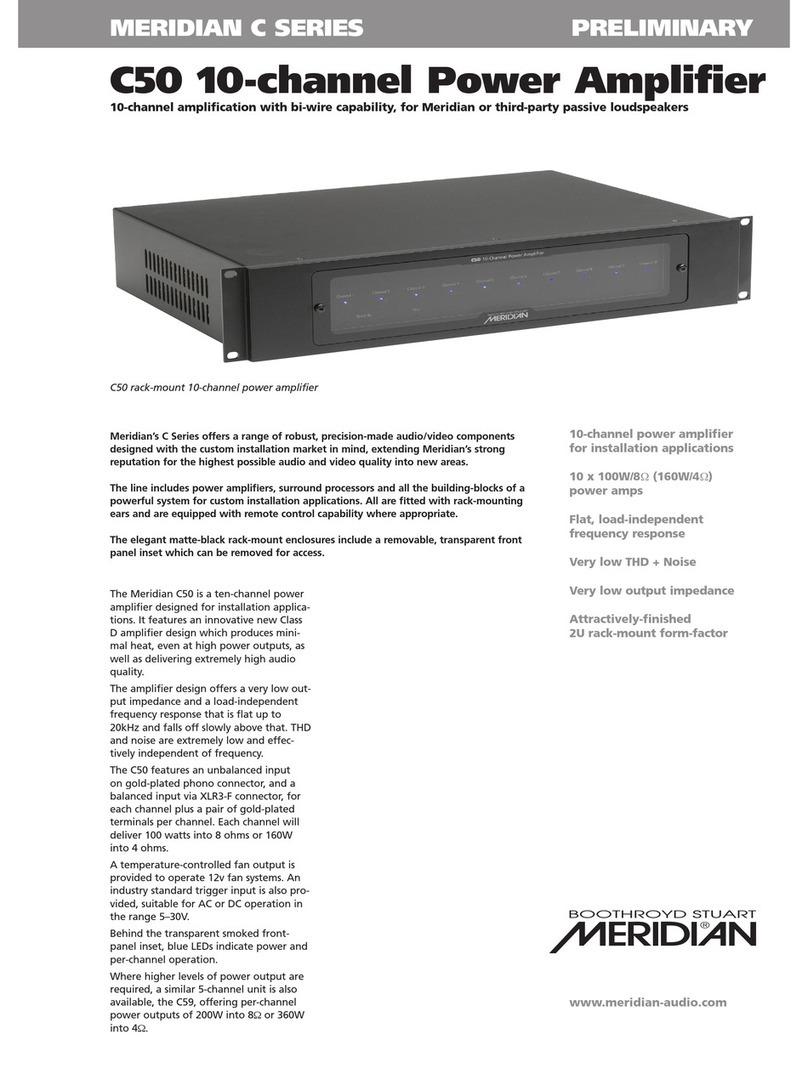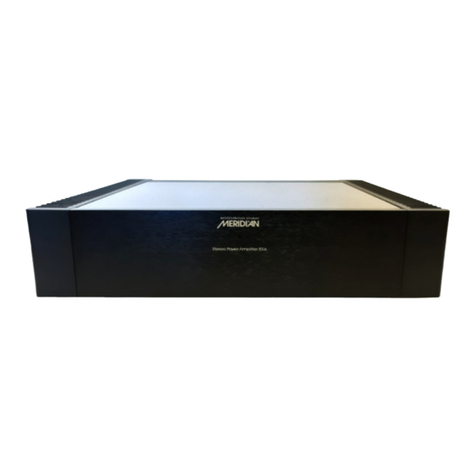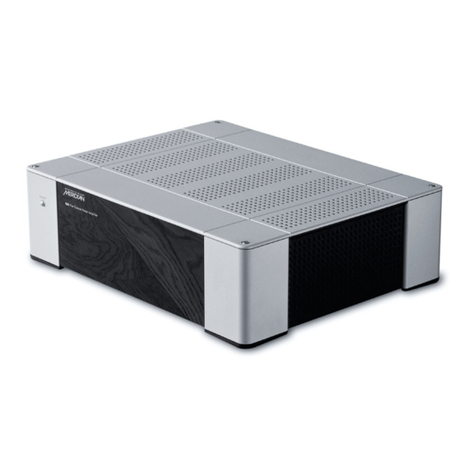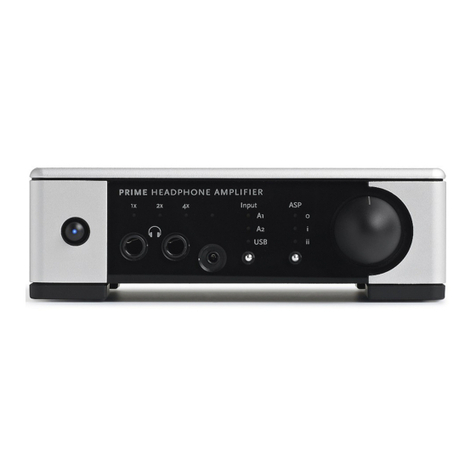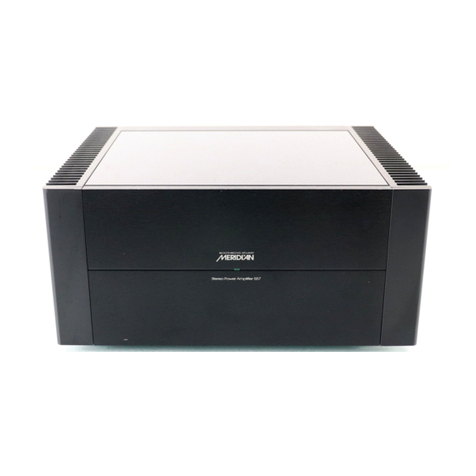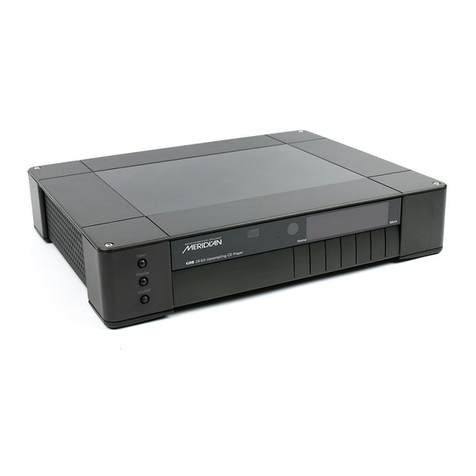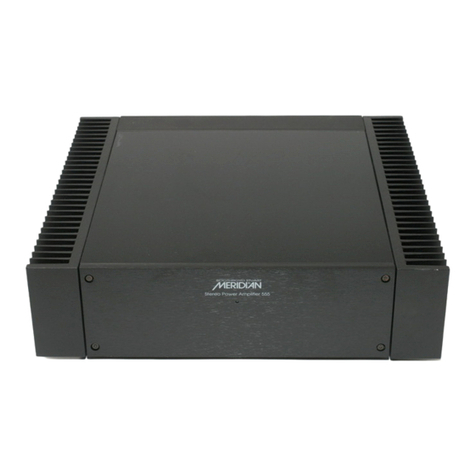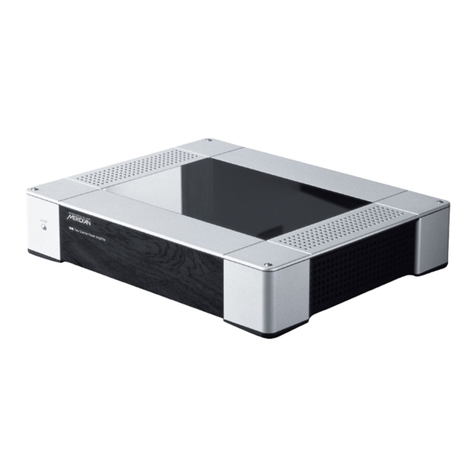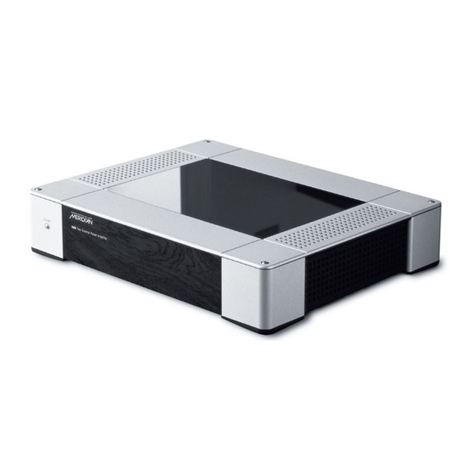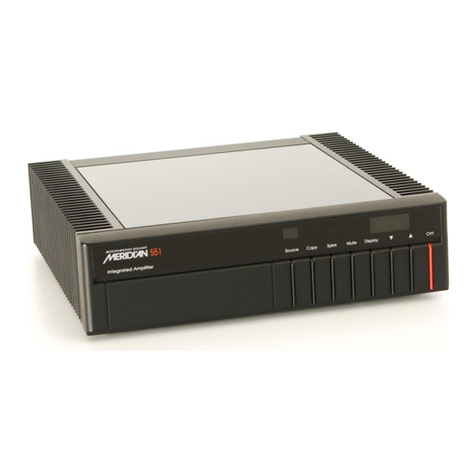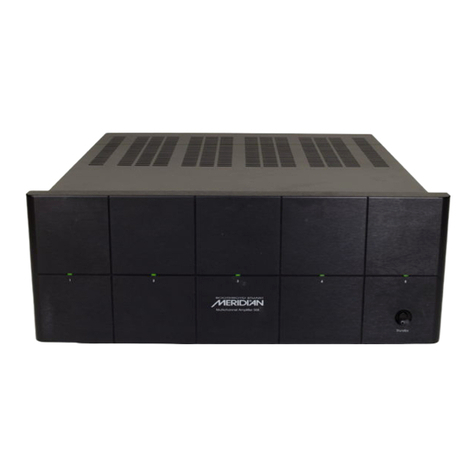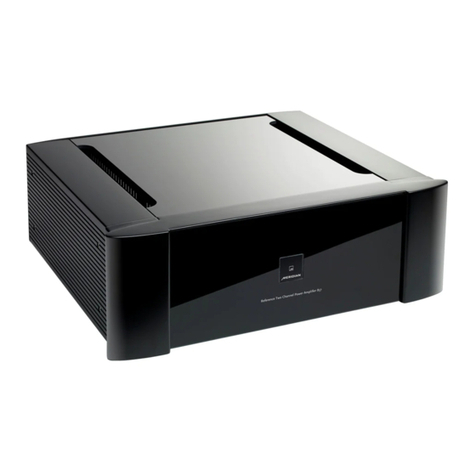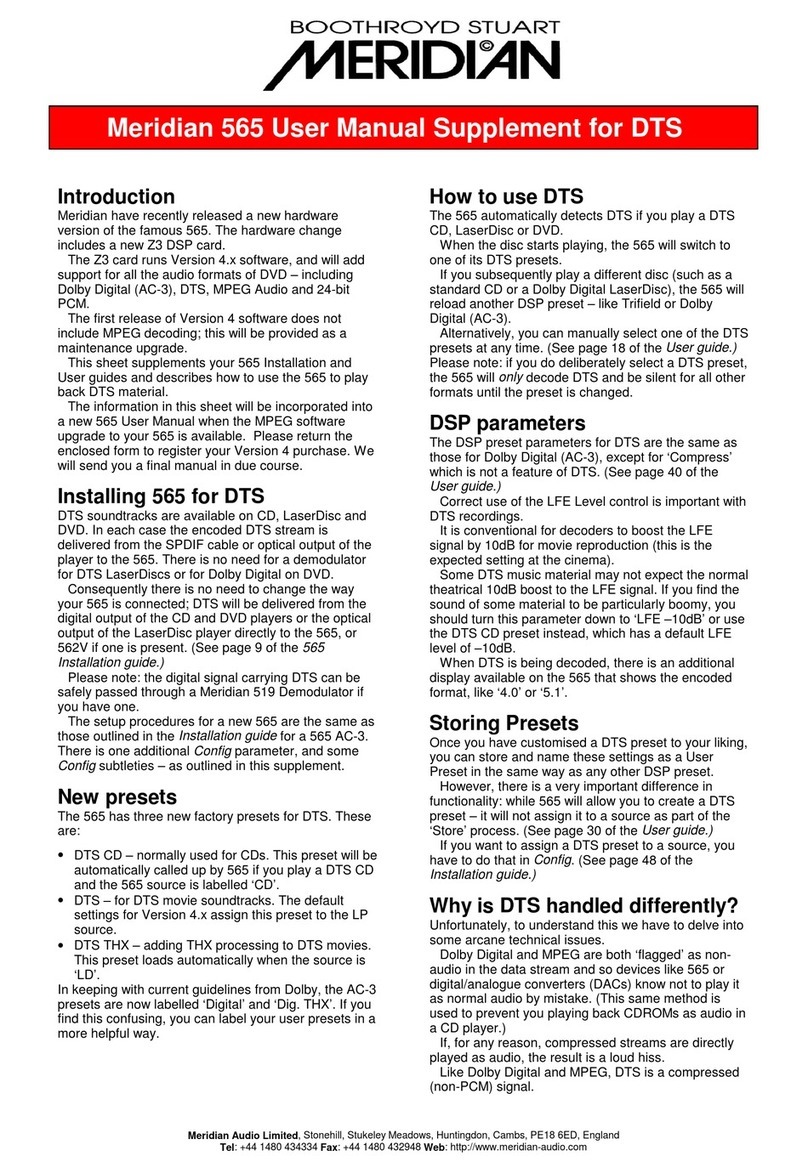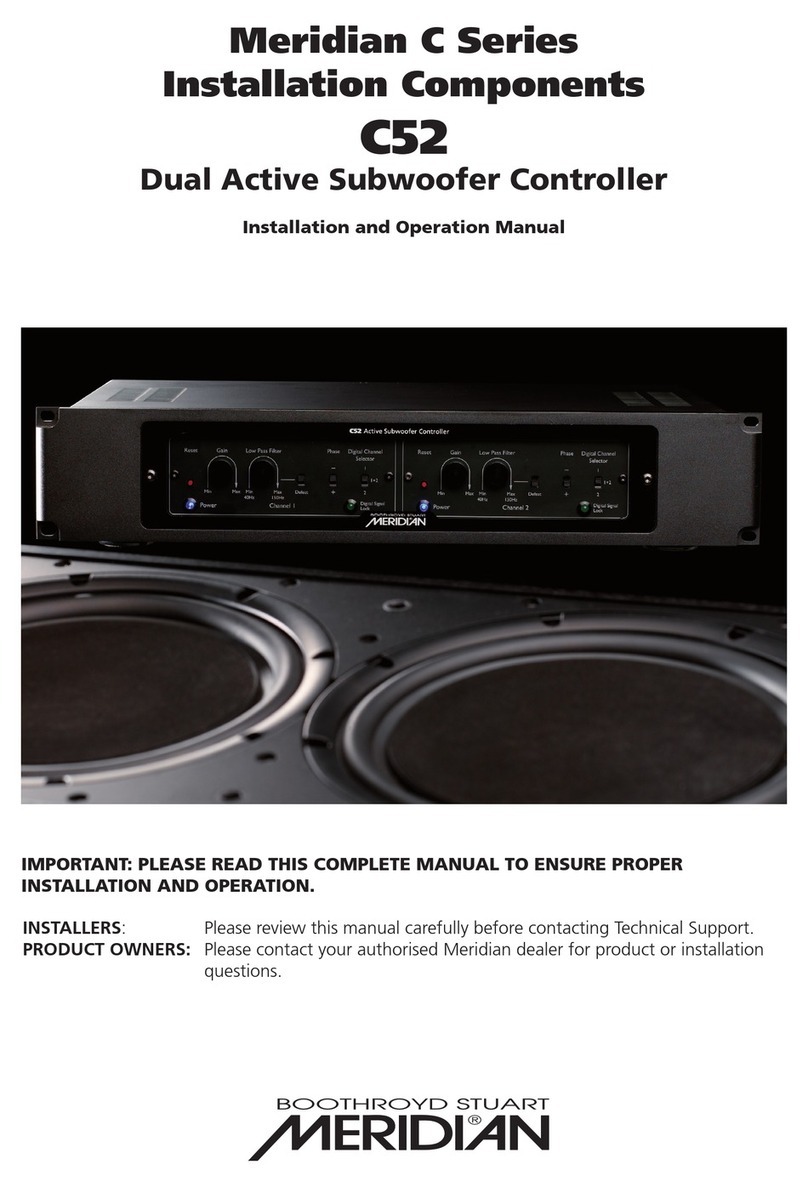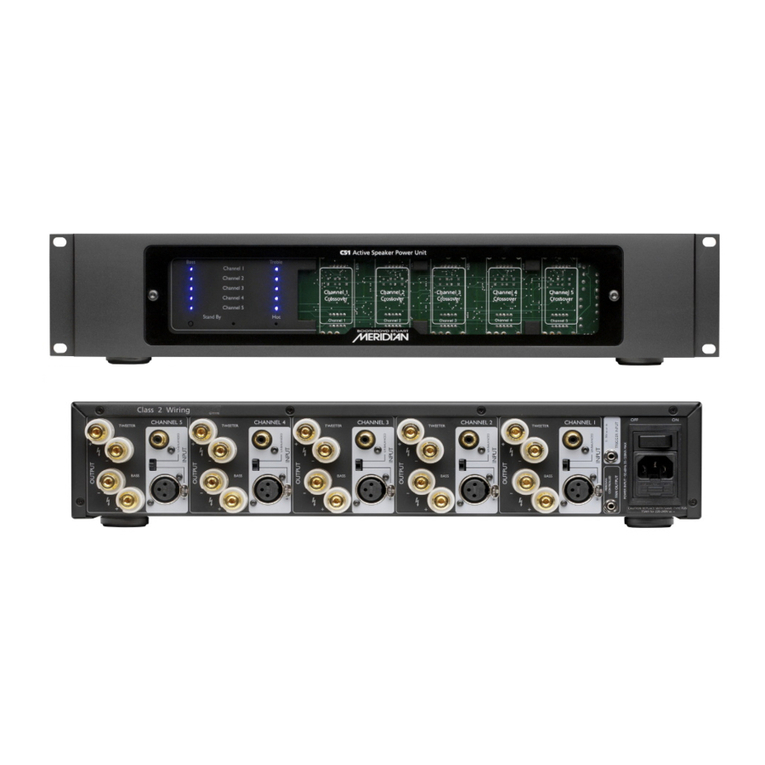EN
Meridian Prime Headphone Amplifier
User
Guide
Using
the
Meridian
Prime
Headphone Amplifier
Connecting
headphones
• Connect headphones to either
of
the jack socket outputs
or
to the mini-jack output on the front panel.
You
can connect multiple pairs
of
headphones at once.
You
can also connect a single pair
of
headphones to both jack
sockets simultaneously, with a suitable balanced cable, to drive
the left and right phones separately for highest quality.
Disabling
the
audio
outputs
For headphone listening you can turn
off
the rear audio outputs:
• Hold down the power button
on
the front panel until the
power light changes from white to green.
Sample rate
When using the USB input the sample rate indicators show
the current sample rate: 1x (44/48kHz), 2x (88/96kHz), or 4x
(176/192kHz).
Analogue
Spatial
Processing
• Push the Analogue Spatial Processing button to select
between
0,
i,
or
ii,
as
shown
by
the ASP indicator.
Most stereo recordings are mixed with the intention
of
playback
over two loudspeakers. When we listen to loudspeakers each
ear does not receive a pure copy
of
the corresponding channel;
instead, just as with live sounds, each ear hears a mixture
of
all
the sound
in
the room. The ear further from a loudspeaker
receives its sound slightly later than the nearer
ear,
and
the
sound
is
also shadowed
by
the head, causing a roll-off
of
higher-frequencies.
When we listen with headphones, simply playing the
recording directly so that each loudspeaker signal
is
fed to
the corresponding ear can often
be
unnatural. The impression
depends on the recording, but there
is
often too much
separation; sounds happen close to each ear
and
the sound
image feels 'in the head'.
The Analogue Spatial Processing (ASP) built into the Meridian
Prime Headphone Amplifier provides two carefully designed
options which blend the left and right signals to emulate
listening to loudspeakers. The processing modes i and
ii
both
provide blend, but with progressively increasing amounts
of
delay, representing different loudspeaker angles. The 0 setting
is
a pure bypass,
and
the left
and
right are fed directly with no
crosstalk.
We find this processing very natural and it can move the image
out
of
the head and provide a more coherent sound.
You
should
experiment with the choices
on
different types
of
recording.
5



